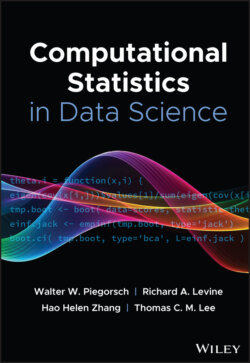Читать книгу Computational Statistics in Data Science - Группа авторов - Страница 60
4.1 Edward, Pyro, NumPyro, and PyMC3
ОглавлениеRecently, there have been several important probabilistic programming libraries released for Python, namely, Edward, Pyro, NumPyro, and PyMC3. These packages are characterized by the capacity to fit broad classes of models, with massive number of parameters, using advanced particle simulators (such as Hamiltonian Monte Carlo (HMC)).
These packages differ in implementation, but all provide world‐class computational solutions to probabilistic inference and Monte Carlo techniques. These packages provide the latest and optimized algorithms for many classes of models: directed graphs, neural networks, implicit generative models, Bayesian nonparametrics, Markov Chains, variational inference, Bayesian multilevel regression, Gaussian processes, mixture modeling, and survival analysis. Edward is built on a TensorFlow backend, while Pyro is built using PyTorch (and NumPyro is based on NumPy). Pyro uses the universal probabilistic programming language (PPL) to specify models. NumPy complies code to either central processing unit (CPU) or Graphical Processing Unit (GPU), greatly increasing computation speed in many statistical/linear algebra computations. PyMC3 is built on a Theno backend and uses an intuitive syntax to specify models.
